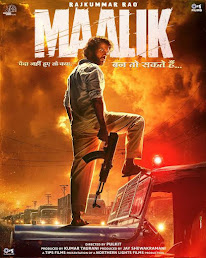‘Lives of Data’ Workshop, 06-07 January 2017, The Sarai Programme, Centre for the Study of Developing Societies (CSDS), Delhi.
Call for Abstracts
‘Data’ has been recently termed as the new oil, new soil, new world currency and the raw material for the new industrial revolution. It has been hypothesised that the era of Big Data will finally see the ‘end of theory’. This hyperbole has it that the new technologies being developed today can produce truth based on computations of large amounts of machine readable digital data. Beyond such deterministic claims, the ‘Data Revolution’ indeed poses compelling theoretical and methodological challenges in all fields with stakes in knowledge. The present conjuncture, we would argue, is loaded with possibilities for rethinking ‘data-driven knowledge’ through longer histories of classification, enumeration, quantification, techno-scientific practices, and forms of media storage, retrieval, computational analysis and use.
Scholarship in the emerging field of data studies has established close connections with science & technology studies (STS), and media and software studies. There is now a growing body of work which questions the Big Data hubris and the excesses of the post Web 2.0 digital deluge. ‘Raw Data’, as Geoffrey Bowker and Lisa Gitelman among others have suggested, is an ‘oxymoron’. In the Indian context, concerns about statistics, governance and knowledge, evident in the histories of colonial census, the work of P C Mahalanobis at the Indian Statistical Institute and the Planning Commission, the emergence of scientific computing in the 1950s-60s, government regulation of media, electronics and telecom, provide a vivid background to think about the new technics, materiality and aesthetics of our digital cultures.
In times when Information and Communication Technologies (ICTs) have passed their initial developmental hype-cycles and mobile phones have somewhat flattened the so-called ‘digital divides’ (while creating many new ones), the fields of information research in India are grappling with socio-technical reconfigurations of a widening scope and scale. The projections and contestations around our much promoted march towards a #DigitalIndia with the world’s largest biometric database (#Aadhaar); a nation-wide digging campaign for broadband connectivity in villages and the building of one hundred #SmartCities; and the intense pursuit of the ‘Next Billion’ users by a floating array of large technology companies and startups (#FreeBasics, #StartupIndia); have inundated the space for reflection and critique. The many known and unknown lives and after-lives of data in this ecosystem of flux demand description, interpretation, concepts, and – if the data permits – theory.
In the past Sarai has organised workshops on ‘Social & Cultural Lives of Information’ and the ‘Lives of Information’, to reflect upon the cultures of information practices and the connections between colonial and post-colonial information infrastructures in South Asia. Continuing our focus on contemporary realities, ICTs and infrastructures, the ‘Lives of Data’ workshop aims to encourage research on pertinent questions concerning ‘data’ – its imaginaries, infrastructures, knowledge politics, and techno-science and media cultures in India and South Asia.
The ‘Lives of Data’ workshop hopes to bring together interdisciplinary researchers and practitioners to examine the historical and emergent conditions of data-driven knowledge production and circulation in Indian and South Asian contexts. We are interested in a conversation which dynamically moves back and forth in science, technology and media history and anthropology to reflect upon the many layered abstractions and materialisations of data, information and knowledge.
The key questions which the workshop will explore are:
– What is data? How is it imagined, collected, archived, developed, scraped, parsed, mined, cleaned, used, interpreted, re-produced, circulated and deleted?
– How do we map the relationships between data, infrastructure and knowledge production?
– How do we reimagine data and information through longer histories of statistics, bureaucracy, governmentality and development?
– What are the stakes involved in analysing the ever increasing volume, velocity, variety and value of data? How do practitioners understand the changing nature of their work with data?
– How do we conceptualise the new data publics?
Workshop themes include:
– Histories of State and Statistics, Classification, Enumeration and Planning
– Data Analytics, Data Ontologies, Digital Objects
– Digital Humanities, Computational Social Sciences, Cultural Analytics
– Cultures of Software Engineering and Design
– Data, Memory and Materiality: Archives, Paper/Digital Databases, Warehouses, Data Centres, Server Farms
– Thinking through Digital Infrastructures: Hardware, Code, Meta-Data, Formats, Protocols, Programming Languages, Information Architectures, Algorithms, Apps, Interfaces, Platforms, APIs, etc.
– Data-Driven Urbanism: Geographies of Mobile Computing, Locative Apps and Social Media, GIS, and Smart Cities
– Openness, Transparency and Access to Data/Information/Knowledge. #RTI #OpenData #DNAProfiling #Copyright #Encryption #Privacy
– Platforms as Government: Transnational Networks of Intermediaries and the Flows of Data/Capital
– ‘SysAdmin’ like the State: Bio-Politics, Surveillance, User/Citizen, Governance, Policing and Law. #Aadhaar #ITact #CyberSecurity
– ‘Beautiful Data’: Design, Aesthetics, Vision and Visualisation
The Sarai Programme invites submission of abstracts for the ‘Lives of Data’ workshop. Besides academic researchers, we strongly encourage media, design and software practitioners to apply for the workshop. Abstracts should not exceed 300 words, and should be sent to dak@sarai.net by 15 September, 2016, with the subject heading ‘Proposal for the Lives of Data Workshop.’ Authors of the selected abstracts will be notified by 01 October, 2016.
The workshop will be held on 06-07 January, 2017 at Sarai-CSDS, 29 Rajpur Road, Delhi. The Sarai Programme will cover three days of accommodation for outstation participants. In addition, participants from India will be eligible for travel support.
Source- http://sarai.net/call-for-abstracts-lives-of-data-workshop/

 There is EMBODIED LANGUAGE a collaborative performance between Mithu Sen and Andrea Cusumano with musician Vetri Bhupathi and Giuseppe Lomeo curated by Eugenio Viola
There is EMBODIED LANGUAGE a collaborative performance between Mithu Sen and Andrea Cusumano with musician Vetri Bhupathi and Giuseppe Lomeo curated by Eugenio Viola
 There is EMBODIED LANGUAGE a collaborative performance between Mithu Sen and Andrea Cusumano with musician Vetri Bhupathi and Giuseppe Lomeo curated by Eugenio Viola
There is EMBODIED LANGUAGE a collaborative performance between Mithu Sen and Andrea Cusumano with musician Vetri Bhupathi and Giuseppe Lomeo curated by Eugenio Viola


















